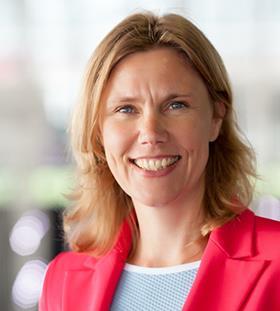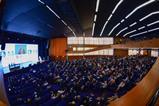Event visitors expect an exciting programme, enhanced with visual techniques and storytelling, that gives them more than just information and facts, says Nynke Lipsius.

How can visual techniques and storytelling enhance the visitors’ experience? At Amsterdam Security we built a Scenario-Based programme that did just that. Goodbye PowerPoint, hello Hollywood.
Openness about secrets
Security is an exciting sector involving crooks, fires, terrorists and cybercrime. You’d be forgiven for thinking there is easily enough material to put together an exciting event. Yet it’s actually quite difficult.
Banks are reluctant to talk about the cyber-attacks they face, and transport companies don’t want their security dilemmas aired in public. So how do we talk about security solutions?
We found the answer at the Nuclear Summit 2014 in The Hague where world leaders discussed theoretical scenarios: fictional stories based on very realistic situations.
Another event, focusing on resistance to antibiotics, also adopted this scenario-based programming approach. We decided that this approach would be ideally suited to our security event.
Scenario-based programming
We made a film and built the event programme around it.
To make sure this movie would focus on the really urgent issues, we worked together with the stakeholders of the event: commercial partners, knowledge institutes, such as the Delft University of Technology, and visitors. We spoke to more than 50 people in total. We asked them all kinds of questions, the main one being: what keeps you awake at night?
Next, we expanded this into a concrete scenario in smaller groups with a professional scriptwriter. Then we made a fictional film in three successive parts.
The first part shows a seemingly normal situation at a company. Next, you see the first signs of things going wrong. And finally, trouble strikes and you can see how things got so bad.
Open discussion
During the event, we screened these parts, which were analysed by experts and followed by discussions. Different sessions focused on different aspects. There were no PowerPoint presentations.
The big advantage was that people really talked to each other, both horizontally and vertically.
Security directors from different organisations were able to discuss risks and solutions without having to reveal any company secrets. Users spoke with research institutes and suppliers about their needs and the best way to help each other.
A tantalising teaser
An additional advantage was that we could use the teaser for the film to invite people – all those who saw it became eager to join.
With over 140 exhibitors and partners, we attracted 6,000 visitors over the three days of the event.
The proportion of visitors with a background in IT rose from 5% in 2015 to 14% this year. The number of visitors with a management position also increased significantly, from 20% in 2015 to 54% in 2017.
Cooperation on IT and physical security
It was a huge job which required a significant investment and took a lot of time. But it released some serious energy!
The new approach added significant value to visitors. Uniquely, we saw IT experts and physical security professionals talk to each other, which meant there were conversations about solutions on an integral level – something that has become a bare minimum for end users nowadays.
This also appealed to CEOs – the film reminded them of their own biggest fears, which can unfortunately become reality all too easily.
In this sense, we made both the risks and the solutions tangible. This transformed a traditional exhibition into an event full of energy, which everyone wanted to attend and which people are already looking forward to again.
Nynke Lipsius, Director of Amsterdam Security, RAI Amsterdam



























No comments yet